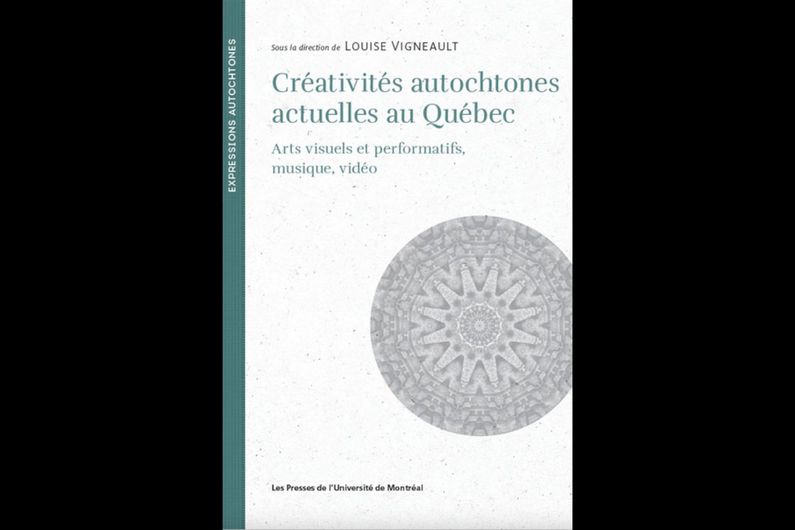Indigenous art enjoys a renaissance
- UdeMNouvelles
09/28/2023
- Virginie Soffer
A new book edited by UdeM’s Louise Vigneault surveys the diversity and vibrancy of Indigenous artistic expression in Quebec.
The last few years have seen a resurgence of Indigenous artistic expression in many disciplines: music, film, photography, painting. In her new book, Créativités autochtones actuelles au Québec : arts visuels et performatifs, musique, vidéo, Louise Vigneault, a professor in the Department of Art History and Film Studies at Université de Montréal, paints a panoramic portrait of this creative vibrancy.
Indigenous artists such as Virginia Pésémapéo Bordeleau and researchers such as Indigenous music specialist Véronique Audet and Michèle Garneau of UdeM’s Department of Art History and Film Studies are featured in the book, which took over 10 years to put together from a variety of sources: artistic, historical and sociological analyses, interviews with artists, and essays on art shows.
What emerges is a mosaic of voices on the richness of Indigenous arts and the strategies of reconstruction and self-affirmation that support the process of decolonization.
The book opens with a conversation between Vigneault and Guy Sioui Durand, a Wendat art curator and performer. The two worked together for more than 10 years researching the Wendat painter Zacharie Vincent. Their research left Vigneault wanting to know more about the importance of art in Indigenous communities.
“It’s often been said that Indigenous people didn’t like to be photographed – but that’s a myth,” said Vigneault. “They understood the power of the image long before we did: how it can convey, protect or appropriate identity, how its political import depends on the use to which it is put.”
Used to be banned
While Indigenous arts are now being showcased, they used to be banned, she noted.
“After Confederation, responsibility for Indian affairs was repatriated and the Indian Act of 1876 formalized the Canadian government’s policies of direct assimilation. The goal was to gradually erase Indigenous status and cultural practices. Then, in 1884, some ceremonies were banned, heralding the introduction of an even harsher policy of cultural eradication.”
Artistic creation linked to these ceremonies became illegal. It was only in 1951 that the Royal Commission on National Development in the Arts, Letters and Sciences recognized that Indigenous art forms were disappearing. Indigenous artists could legally create works of art again, but were expected to be inspired by white models and integrate into the majority culture. It was not until 1994 that they began to receive funding from the Canada Council for the Arts.
Vigneault wanted to find out how this history has affected Indigenous artistic production since then, including access to art markets and networks. Once relegated to ethnographic or history museums, these days Indigenous artwork is increasingly being exhibited in fine-art museums.
Efforts to integrate
“Art institutions are now making efforts to integrate and include Indigenous art,” noted Vigneault.
“This means it now lives alongside and in relation to the art of other cultures in Quebec and the rest of the continent. The cross-fertilization enriches artistic visions, ways of thinking and ways of making art. It has also stimulated Indigenous artists to question the past, to transform memory into a shared and reclaimed history, and to project themselves into the future.”
And now, thanks to the Internet, Indigenous artists are occupying new geographies that transcend borders.
Vigneault quotes the words of Indigenous author, artist and filmmaker Melissa Mollen Dupuis: “It’s as if all the imaginary lines separating the provinces have been removed and Turtle Island reunited!”
About the book
Créativités autochtones actuelles au Québec : arts visuels et performatifs, musique, vidéo, Les Presses de l’Université de Montréal, 2023, 400 pages.
Edited by Louise Vigneault, with contributions from Véronique Audet, Marianne Desrochers, Michèle Garneau, Sophie Guignard, Gabrielle Marcoux, Élizabeth Kaine, Édith-Anne Pageot and Guy Sioui Durand.














